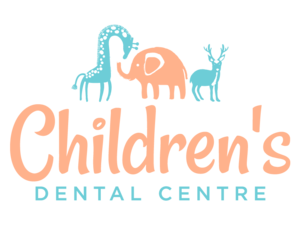Local Anaesthetics and Children – Part 2
WHERE & HOW TO ADMINISTER LA
The first post covered if paediatric dentistry requires local anaesthetic (LA) and the general safety points. This post will discuss our techniques for giving local anaesthetic and variations we make for different procedures.
Which Local Anaesthetic Do We Use?
As mentioned in the previous post, any procedure that is likely to result in pain requires LA. We will reiterate here; it is not acceptable to do invasive procedures on children without local anaesthesia – you will break them (and torture them).
Our LA of choice is Articane 4% for most procedures. The evidence shows that the efficacy is similar to lignocaine. Anecdotally, however, we and many dental practitioners report better results with Articaine. In saying that, we still use Lignocaine 2% for inferior alveolar blocks.
General Points for Administering LA
Everyone will have their own technique for how they administer LA and you will need to find what is the best approach for you. There is nothing harder to come back from than a breach of trust with a child. So, if you tell them it will not hurt, and it does, you will lose them. Therefore, you need to have profound and effective anaesthesia.
General points for LA techniques in children
· Avoid using negative (pain-thought provoking) terminology. Don’t say: Needle, sharp scratch, small sting etc.
o Alternate terminology could be: It may feel a bit cold next to your tooth.
· Do not let them see the needle, ensure their eyes are closed and they can keep them closed. If they cannot follow this instruction, will they tolerate the LA?
· Use distraction when injecting – wiggle toes, fingers, take them on a mental journey to the park/space/zoo
· Inject slowly! Slower than you would for an adult. Approximately 1mL per minute.
o There is no need to rush this as the LA will be working while you are injecting slowly anyway so you are not losing time – Just be patient
Maxillary Dental Procedures and Palatal Local Anaesthesia
When performing dental procedures in maxillary teeth we will either be using rubber dam or performing an extraction. As such, we will be involving the palatal tissues, and therefore palatal anaesthesia is necessary. Another good reasons for numbing palatal tissues are in cases where you are performing a pulpotomy and you are uncertain if the pulp is ‘healthy’. If you have palatal anaesthesia already, and the pulp is unhealthy, it is quite simple to just proceed with the extraction without having to give them another ‘needle’.
To successfully and painlessly administer maxillary local anaesthesia, we will inject very slowly in the buccal sulcus over around 1 minute. We will then let it sit for around another 1-2minutes and then inject into the papilla and slowly progress until we get blanching of the palatal tissues. We will then inject into the blanched palatal tissues. Anecdotally, we have found that Articaine is more successful for a painless papillary approach compared to Lignocaine.
Mandibular Dental Procedures and Palatal Local Anaesthetic
In children, the bony cortex (outer bony layer) is less dense and therefore LA infiltrations are generally successful for many procedures in the mandible. We will also generally cover the lingual tissues as per the maxilla. Blocks are just not fun for anyone and thankfully we do not need to place them as frequently as we used to.
However, in what cases we would place an IAN block?
• Extraction Md E when:
• Severe pain over the last few days
• Facial cellulitis or large intra-oral swelling
• If an infiltration has failed
• Pulpotomy Md E (very rarely required)
• Restoration of hypomineralised 6
• Extraction of a permanent 6
Summary
This post has dealt with how to give local anaesthesia in children and variations required for different procedures. Everyone will find their own behaviour management technique for administering LA and hopefully this post has helped.
It is hard over a written post to specifically describe how we do it. On the courses that we run, we do have videos, examples and a discussion about how we successfully give LA to children. If you wanted to go on a waiting list for the next courses email: courses@kidsdentaltips.com.au
All the best
Sarah and Tim

